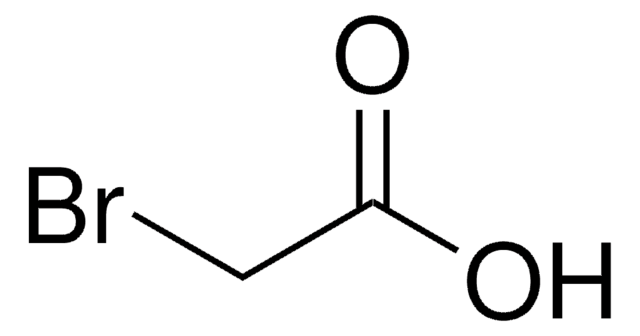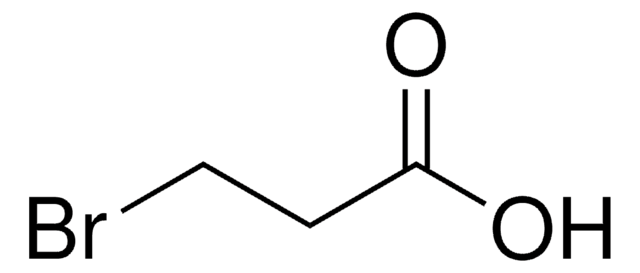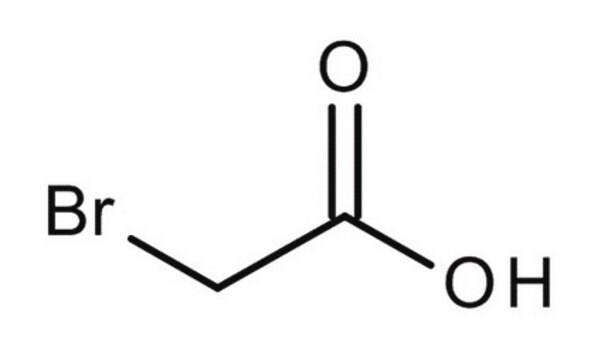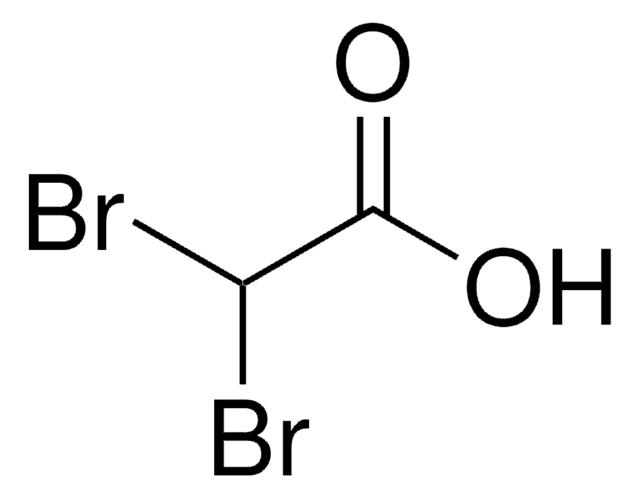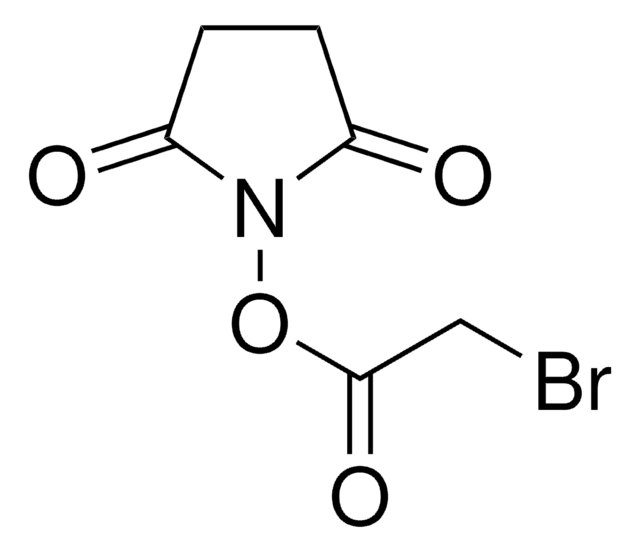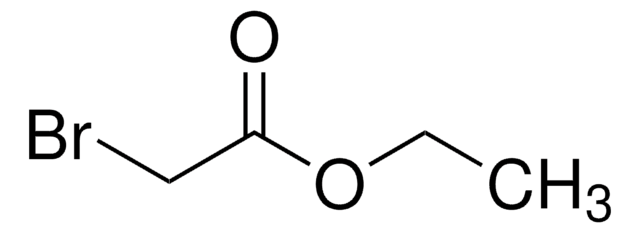B56307
Bromoacetic acid
reagent grade, 97%
Synonym(s):
2-Bromoethanoic acid, Bromoethanoic acid, Carboxymethyl bromide, MBAA, Monobromoacetic acid
About This Item
Recommended Products
grade
reagent grade
Quality Level
Assay
97%
form
crystals
bp
208 °C (lit.)
mp
47-49 °C (lit.)
SMILES string
OC(=O)CBr
InChI
1S/C2H3BrO2/c3-1-2(4)5/h1H2,(H,4,5)
InChI key
KDPAWGWELVVRCH-UHFFFAOYSA-N
Gene Information
human ... PTPN6(5777)
Looking for similar products? Visit Product Comparison Guide
Related Categories
General description
Application
- As a quaternizing and alkylating agent.
- For carboxymethylation of poly(ethylene glycol) for bacterial adhesion experiments.
- For the synthesis of C60-fused lactone in the presence of Mn(OAc)3·2H2O.
related product
Signal Word
Danger
Hazard Statements
Precautionary Statements
Hazard Classifications
Acute Tox. 2 Oral - Acute Tox. 3 Dermal - Acute Tox. 3 Inhalation - Aquatic Acute 1 - Eye Dam. 1 - Skin Corr. 1A - Skin Sens. 1
Storage Class Code
6.1A - Combustible acute toxic Cat. 1 and 2 / very toxic hazardous materials
WGK
WGK 3
Flash Point(F)
235.4 °F - closed cup
Flash Point(C)
113 °C - closed cup
Personal Protective Equipment
Choose from one of the most recent versions:
Already Own This Product?
Find documentation for the products that you have recently purchased in the Document Library.
Customers Also Viewed
Our team of scientists has experience in all areas of research including Life Science, Material Science, Chemical Synthesis, Chromatography, Analytical and many others.
Contact Technical Service